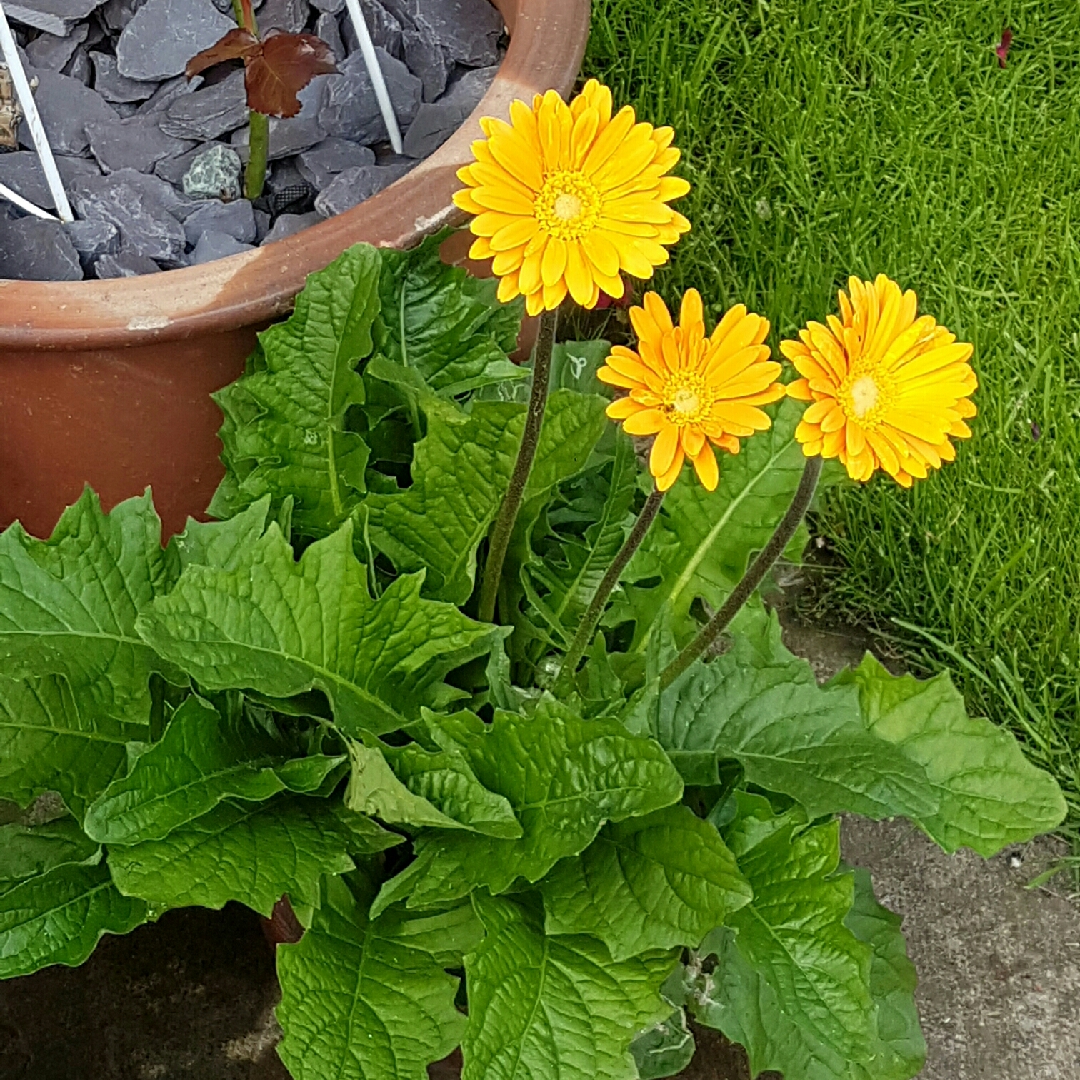
Gerbera garvinea 'Sweet Honey'
Gerbera 'Sweet Honey'
Gerbera 'Sweet Honey' produces plenty of sunshine yellow daisy blooms that are twice the size of other hardy Gerberas, and make fabulous cut flowers. Blooming reliably from mid-summer through to mid autumn, these wonderful clump forming hardy perennials make a big impact in borders and patio containers. Height and spread: 45cm
Contributed by @tina
-
Full sun
-
Occasional watering
-
Frost Hardy: 23F (-5°C)
-
Light and free draining
Common name
Gerbera 'Sweet Honey'
Latin name
Gerbera garvinea 'Sweet Honey'
type
Perennial
family
Asteraceae
ph
5.0 - 7.0 Acid - Neutral
Plant & bloom calendar
-
Best time to plant
full grown dimensions
 0.45 M
0.45 M
0.45 M
0.45 M
Gerbera garvinea 'Sweet Honey'
Gerbera 'Sweet Honey' produces plenty of sunshine yellow daisy blooms that are twice the size of other hardy Gerberas, and make fabulous cut flowers. Blooming reliably from mid-summer through to mid autumn, these wonderful clump forming hardy perennials make a big impact in borders and patio containers. Height and spread: 45cm
Propogation
From Early Spring TO Early Spring
Growing gerbera daisy plants is possible from seed, seedlings or division. Seed is the cheapest method, but seeds must be sown immediately as they lose viability quickly after opening. Keep in mind seeds may also not be true to form. Growing from seedlings or divided plants is easier and you can be sure what the flower type will be. If you have older plants, the crowns can be lifted and divided in early spring. Remove lower leaves and replant immediately.
Planting
From Early Spring TO Early Spring
Plants thrive in a position with full sun and sandy soil. A little compost added at planting will encourage good flower growth. With newly sown seeds, a well-draining propagation mix is a must, as is bright indirect light. Crown rot is a common problem with gerbera daisies, which is caused by planting the crowns too deeply. The crown should be visible above the soil and allowed to dry out between each watering.










